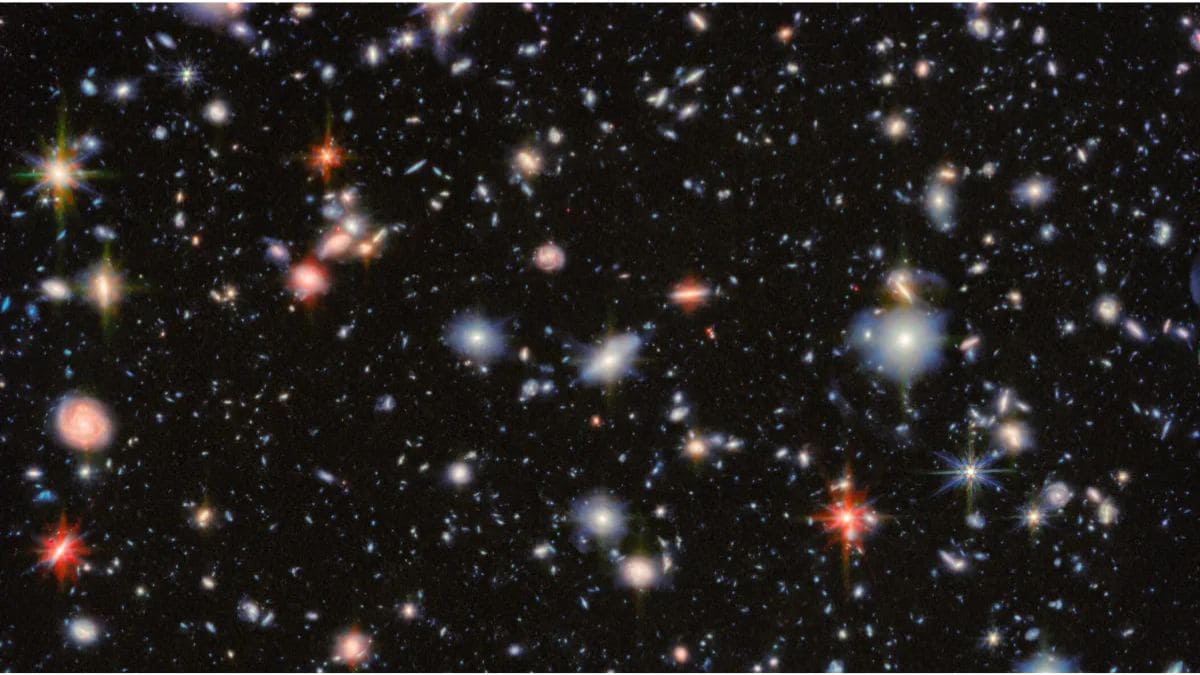
The James Webb Area Telescope (JWST) has returned to Hubble’s Extremely Deep Area, capturing over 2,500 galaxies throughout cosmic historical past. It’s a part of JWST’s JADES survey, re-imaging the identical patch in infrared. Webb’s infrared cameras (NIRCam and MIRI) see a lot fainter objects than Hubble. Whereas Hubble’s UDF confirmed about 10,000 galaxies in seen mild, Webb’s extraordinarily deep (~100-hour) mid-infrared publicity now reveals galaxies shaped just some hundred million years after the Massive Bang. About 80% of the galaxies within the Webb picture are seen from that early period.
Sharper, Deeper Infrared Imaging
In accordance with a study revealed within the journal Astronomy & Astrophysics, Webb’s infrared devices have dramatically sharpened the deep subject. Its Mid-Infrared Instrument (MIRI) used roughly 100 hours on the F560W filter — the longest single-filter Webb publicity to this point — whereas NIRCam supplies shorter-wavelength protection. Mixed, they provide a multi-wavelength infrared view “deeper than any earlier survey”, surpassing Hubble’s depth and richness.
The brand new picture covers a couple of quarter of the unique UDF however nonetheless comprises ~2,500 galaxies, many too faint for Hubble. In parallel, the JADES workforce used Webb’s NIRSpec spectrograph on 253 very faint sources, acquiring safe redshifts and spectra for 178 of them (out to z≈13.2).
Galaxies, Star Formation and Hidden Black Holes
Webb’s false-color picture encodes every galaxy’s distance and composition. Many galaxies glow pink or orange, indicating dusty star-forming methods or older pink stellar populations. These pink/orange objects can even harbor energetic central black holes (energetic galactic nuclei) heating the mud. Tiny green-white dots mark essentially the most distant galaxies (seen within the first billion years), whereas blue/cyan spots are nearer, lower-redshift methods.
This shade coding helps astronomers pinpoint the place star formation is intense and the place hidden black holes lie. The JADES program will then use NIRSpec spectroscopy to measure every galaxy’s star-formation charge and chemical make-up, constructing an in depth census of the early universe.
